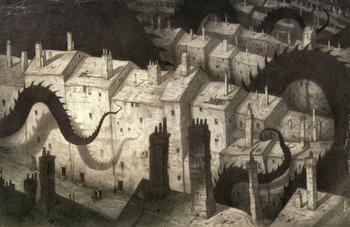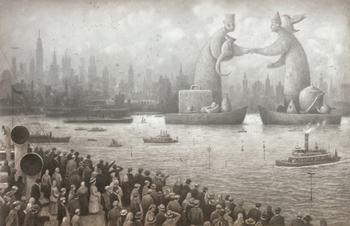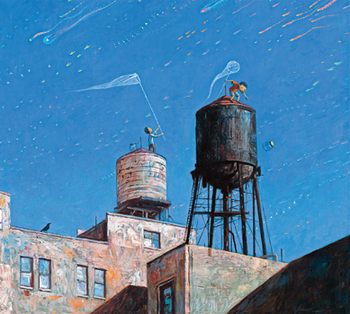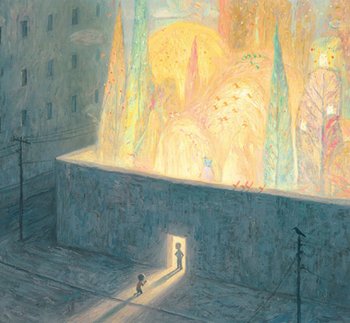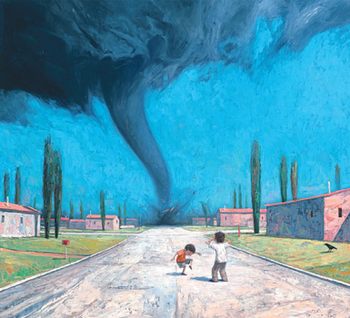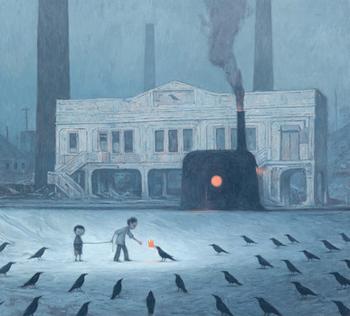Shaun Tan is a bestselling author and illustrator whose books aren’t easily pigeonholed: some you’ll find in the children’s section of a bookstore, others are shelved with graphic novels. They’re filled with beautiful landscapes and rich textures, but with a quietly sinister undercurrent. In Tan’s bestseller The Arrival, the protagonist is a man fleeing a shadowy country full of ominous monsters. In The Lost Thing, which was adapted into an Oscar-winning short film, a boy helps a strange, mechanical creature find its way home. None of his stories are violent or scary but, Tan says, they’re “a little bit weird and dark.”
So are Tan’s picture books for children, or are they short graphic novels for adults? “I used to protest loudly against anybody who would categorize them as children’s books,” Tan says. These days, he’s less concerned with writing to a specific audience and more interested in experimenting with narrative. Many of his books have only a few words of text on each page, opening up the stories to individual readers’ interpretations. Tan’s latest book, The Rules of Summer, follows two brothers through their summer adventures with only a single “rule” appearing next to each imaginative illustration: “Never eat the last olive at a party;” “Never ruin a perfect plan.”
And now that he has an infant daughter, “I suddenly realize what picture books are used for,” Tan laughs. “It never occurred to me that parents sit down with their kids and go through and examine the pictures.”
Bonus Track: Kurt's extended conversation with Shaun Tan
Music Playlist
-
Feeding
Artist: Michael YezerskiAlbum: The Lost Thing (Original Soundtrack)Label: Passion Pictures Australia -
Picture Book
Artist: The KinksAlbum: Album Classics: The Best of The KinksLabel: Sanctuary




